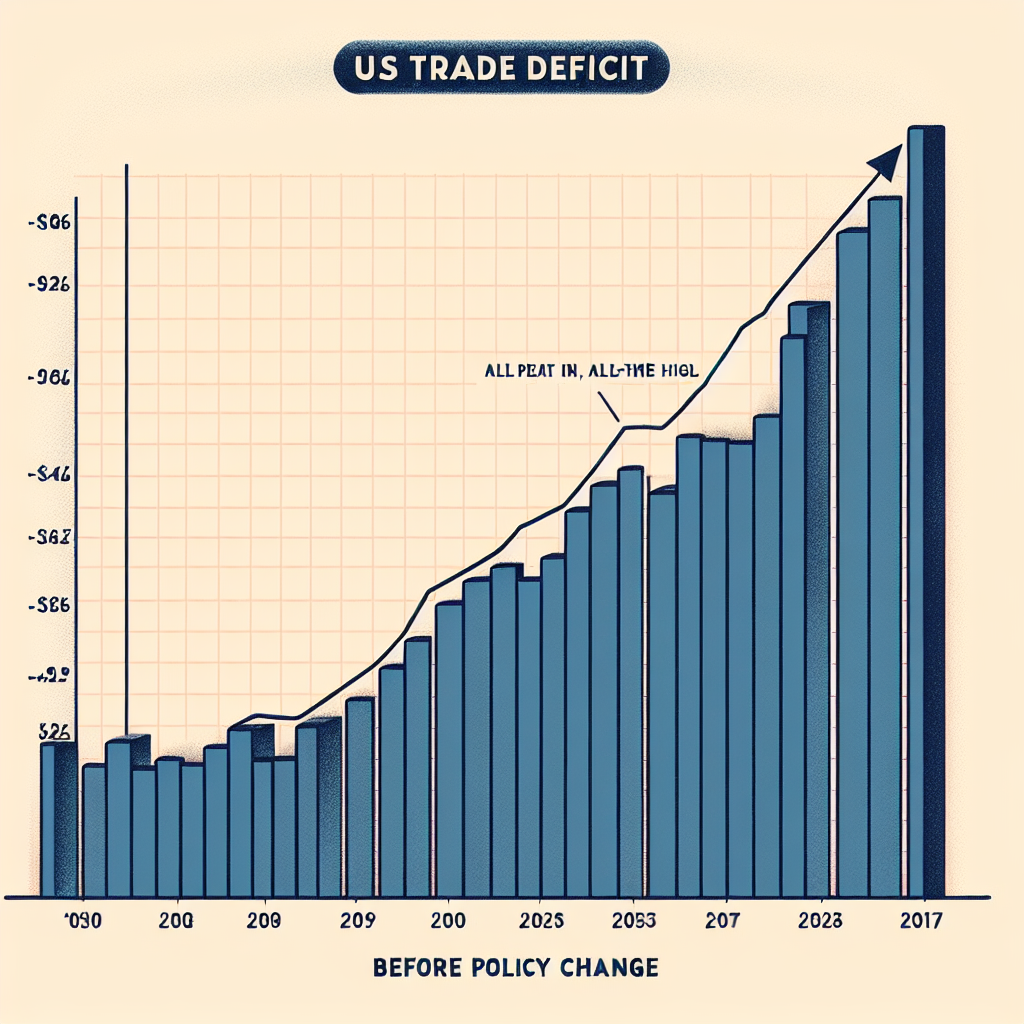US Trade Deficit Reaches All-Time High Before Trump Tariffs
US Trade Deficit Reaches All-Time High Before Trump Tariffs
Overview of the Trade Deficit Surge
The United States trade deficit has soared to unprecedented levels, marking a significant economic milestone just before the implementation of tariffs by the Trump administration. This development has sparked widespread discussion about the implications for the US economy and its global trade relationships.
Key Factors Contributing to the Deficit
- Increased Imports: A surge in consumer demand has led to a substantial increase in imports, particularly in sectors such as electronics and automobiles.
- Stagnant Exports: Despite a robust economy, US exports have not kept pace with imports, contributing to the widening deficit.
- Strong Dollar: The strength of the US dollar has made American goods more expensive abroad, further dampening export growth.
Implications of the Trade Deficit
The record-high trade deficit has several potential implications for the US economy:
- Economic Growth: A persistent trade deficit can weigh on GDP growth, as it reflects more money leaving the country than coming in.
- Policy Challenges: The deficit presents a challenge for policymakers aiming to balance trade and stimulate domestic production.
- Global Trade Relations: The deficit may strain relations with key trading partners, especially as new tariffs are set to take effect.
Looking Ahead: The Impact of Trump Tariffs
As the Trump administration prepares to implement tariffs, the focus shifts to how these measures will affect the trade deficit. The tariffs are intended to reduce the deficit by encouraging domestic production and reducing reliance on foreign goods. However, the potential for retaliatory tariffs from other countries could complicate these efforts.
Conclusion
The US trade deficit reaching an all-time high underscores significant economic challenges and sets the stage for the upcoming tariff policies. While the tariffs aim to address the deficit, their success will depend on a complex interplay of domestic and international economic factors. The situation remains dynamic, with potential long-term impacts on the US economy and its global trade relationships.

















